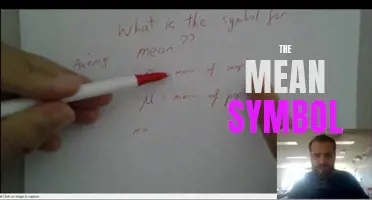
The star symbol has been revered and interpreted in countless ways throughout history, and its spiritual meaning is deeply rooted in various belief systems and cultures around the world. From ancient civilizations to modern religions, the star has symbolized a connection between the earthly and the divine, serving as a guiding light, a source of inspiration, and a metaphor for the human soul. In this article, we will explore the spiritual significance of the star symbol, its diverse interpretations, and its enduring power to inspire and uplift. So, buckle up and embark on a journey to uncover the hidden spiritual realms behind the radiant star symbol.
What You'll Learn
- What is the spiritual meaning behind the star symbol?
- How has the star symbol been used in different religions or spiritual practices?
- Does the star symbol hold a universal spiritual meaning, or does it vary across cultures and belief systems?
- Can the star symbol be seen as a representation of divine guidance or protection in spiritual contexts?
- Are there specific rituals or practices associated with the star symbol in different spiritual traditions?

What is the spiritual meaning behind the star symbol?
The star symbol carries a rich spiritual meaning that has been recognized and revered by various cultures throughout history. It is often associated with divinity, enlightenment, guidance, and protection. In many belief systems, the star is seen as a powerful and sacred symbol that represents both cosmic and spiritual realms.
One of the most common interpretations of the star symbol is its association with divinity and spiritual illumination. The star is often seen as a representation of a higher power or divine presence. It is believed to be a symbol of celestial forces and cosmic energies that guide and inspire individuals on their spiritual journeys. The star is also seen as a metaphor for enlightenment, with each point of the star representing different facets of spiritual wisdom.
In addition to divinity and enlightenment, the star symbol is often associated with guidance and protection. Just as stars have historically been used by sailors to navigate and find their way, the star symbol is believed to provide guidance and direction in the spiritual realm. It is seen as a beacon of light and hope, guiding individuals through life's challenges and helping them stay on their spiritual path.
Furthermore, the star symbol is often regarded as a source of protection. Many cultures believe that the star acts as a shield against negative energies and evil forces. It is believed to have the power to ward off malevolent spirits and bring about spiritual and physical protection to those who wear or invoke it. The star is often used in talismans and amulets to provide spiritual protection to the wearer.
The star symbol is also associated with balance and harmony. Many stars are depicted as having equal points or lines, symbolizing the interconnectedness and interdependence of different aspects of life and the universe. The star is often seen as a symbol of unity, reminding individuals of their connection to others and the larger cosmos. It represents the idea that all beings are part of a greater whole and that everything is interconnected.
Overall, the spiritual meaning behind the star symbol is multifaceted and deeply profound. It encompasses themes of divinity, enlightenment, guidance, protection, balance, and unity. Whether worn as jewelry, used in artwork, or invoked in spiritual practices, the star symbol holds a special significance and serves as a reminder of the sacred and eternal nature of existence.
Understanding the Meaning Behind Ford Dashboard Symbols
You may want to see also

How has the star symbol been used in different religions or spiritual practices?
The star symbol is commonly used in various religions and spiritual practices throughout the world. Its significance and meaning vary depending on the culture and context in which it is used. In this article, we will explore how the star symbol has been used in different religions and spiritual practices.
Christianity:
In Christianity, the star symbol is associated with the birth of Jesus Christ. According to the Bible, a bright star appeared in the sky, guiding the three wise men to the birthplace of Jesus. This star symbolizes divine guidance, hope, and the manifestation of God's presence on Earth.
Judaism:
In Judaism, the star symbol is known as the Star of David, also called the Shield of David or Magen David. It is a six-pointed star formed by two overlapping triangles. The Star of David is the most recognizable symbol of Jewish identity and represents the unity of the Jewish people and their connection to God. It is commonly seen on synagogues, Torah scrolls, and the Israeli flag.
Islam:
In Islam, the star symbol is not commonly used. However, stars hold significance in Islamic art and architecture, where they are often represented as stylized geometric patterns. These patterns, known as arabesques, are used to decorate mosques and other Islamic structures, representing the infinite nature of Allah and the interconnection of all things.
Hinduism:
In Hinduism, the star symbol is associated with various deities and spiritual concepts. The most significant star symbol in Hinduism is the Shri Yantra, a geometric pattern composed of nine interlocking triangles. The Shri Yantra represents the divine union of masculine and feminine energies, symbolizing the cosmic creation and the ultimate reality.
Buddhism:
In Buddhism, the star symbol may be used to represent enlightenment or the attainment of Nirvana. The eight-pointed star, known as the Dharma Wheel, is a common Buddhist symbol. It symbolizes the Noble Eightfold Path, which leads to the cessation of suffering and the realization of enlightenment.
Wicca and Paganism:
In Wicca and Paganism, the star symbol is commonly known as the pentacle or pentagram. It is a five-pointed star enclosed within a circle. The pentacle symbol represents the five elements (earth, air, fire, water, and spirit) and is often used as a protective amulet or a symbol of spiritual connection.
Native American Spirituality:
In Native American spirituality, stars are seen as symbols of wisdom, guidance, and connection to the spiritual realm. Many Native American tribes have legends and ceremonies dedicated to stars, and they often use star symbols in their artwork and regalia.
Overall, the star symbol holds significant meaning in various religions and spiritual practices. It represents guidance, unity, enlightenment, protection, and divine connection. Its interpretations may differ, but the star symbol remains a powerful and universal emblem across different cultures and beliefs.
Decoding the Meaning of Mitsubishi's Warning Lights and Symbols: What Do They Really Signify?
You may want to see also

Does the star symbol hold a universal spiritual meaning, or does it vary across cultures and belief systems?
The star symbol has a long history and holds different spiritual meanings across various cultures and belief systems. While some general interpretations can be found, the specific symbolism of the star can vary significantly depending on context.
One common interpretation of the star symbol is its association with divinity and spirituality. In many ancient civilizations, stars were believed to be celestial beings and were seen as messengers from the gods. The concept of a "guiding star" is also prevalent in many religious texts, symbolizing spiritual guidance and enlightenment.
For instance, in Christianity, the Star of Bethlehem is said to have guided the Wise Men to the birthplace of Jesus. This star is seen as a symbol of hope and the divine presence. Similarly, in Islam, the crescent moon and star symbolizes the beginning of the lunar month and is associated with divine guidance and protection.
In other cultures, stars were also revered as symbols of protection. In ancient Egypt, the five-pointed star, known as the pentagram, was seen as a symbol of protection against evil. It was believed that the star's points represented the elements (earth, air, fire, water) and the divine spirit, offering spiritual protection.
However, not all star symbols hold positive connotations. In some belief systems, the inverted pentagram, with the point facing downwards, is associated with darkness and evil. This symbolism is often used in occult practices and is seen as a representation of the devil or demonic forces.
In addition to these interpretations, stars hold different meanings in astrology and astronomy. In astrology, the stars and their positions at the time of birth are believed to influence a person's personality and destiny. Astronomically, stars are celestial objects that emit light and heat, playing a vital role in the creation and sustenance of life.
Overall, the spiritual meaning of the star symbol cannot be generalized, as it varies across different cultures, religions, and belief systems. It is essential to understand the specific cultural and religious context to interpret the symbolism correctly. Despite the variations, stars generally hold a sense of wonder, hope, and guidance, connecting humanity to the vastness of the cosmos and the divine.
Decoding the Symbols: Exploring Chrysler Crossfire Dashboard Symbols and Their Meanings
You may want to see also

Can the star symbol be seen as a representation of divine guidance or protection in spiritual contexts?
The star symbol has been used by various spiritual and religious traditions throughout history. It is often seen as a representation of divine guidance or protection. In many cultures, the star symbol is associated with the heavens and is believed to bring blessings and good fortune. This article will explore the spiritual significance of the star symbol and how it is viewed in different religious and spiritual contexts.
In Christianity, the star symbol is most commonly associated with the Star of Bethlehem, which guided the three wise men to the birthplace of Jesus. It is seen as a sign of God's presence and providence, guiding believers on their spiritual journey. The star is often used to symbolize hope, light, and divine intervention.
In Judaism, the star symbol is known as the Star of David or Magen David. It is considered a holy symbol and is widely recognized as a symbol of Jewish identity. The six-pointed star is said to represent the merging of the divine and human worlds, and it is believed to provide divine protection. The Star of David is used in Jewish rituals, prayer, and as a symbol on the Israeli flag.
In Islamic tradition, the star symbol is not as prevalent as it is in Christianity or Judaism. However, the crescent and star are commonly associated with Islam and are seen as symbols of divine guidance and protection. The star is often interpreted as representing the divine light of Allah, guiding believers on their spiritual journey.
In pagan and Wiccan traditions, the star symbol is often associated with the five elements: earth, air, fire, water, and spirit. The pentagram, a five-pointed star, is a widely recognized symbol of magic and spirituality. Each point of the star represents one of the elements, and the circle surrounding it symbolizes unity and protection. The star is often used in rituals and spells to call upon the energies of the elements and seek divine guidance.
In astrology, the star symbol represents the zodiac signs and is used to map and interpret celestial influences on human lives. Each zodiac sign is associated with a particular star constellation, and the positioning of the stars at one's birth is believed to influence their personality traits and life path. Astrology is seen as a way to gain insight into one's spiritual journey and receive guidance from the celestial realm.
Overall, the star symbol is widely seen as a representation of divine guidance or protection in various spiritual and religious contexts. It is associated with hope, light, and the merging of the divine and human worlds. Whether it is the Star of Bethlehem in Christianity, the Star of David in Judaism, or the star constellations in astrology, the star symbol holds deep spiritual significance and is believed to bring blessings and divine intervention to those who seek it.
Unraveling the Mysteries of Hawaiian Petroglyphs: Symbols and Their Profound Meanings
You may want to see also

Are there specific rituals or practices associated with the star symbol in different spiritual traditions?
The star symbol has been revered and represented in various spiritual traditions throughout history. It holds significant meaning and is often associated with cosmic forces, spirituality, and the mysterious wonders of the universe. As a result, many cultures and religions have developed rituals and practices that revolve around this symbol.
One notable spiritual tradition that incorporates the star symbol is esotericism. Esoteric traditions such as astrology and tarot use stars to represent celestial energies and the interconnectedness of the universe. Astrology, for instance, utilizes the positioning and alignment of stars and planets to interpret an individual's personality traits, life patterns, and potential future events. Similarly, tarot cards often feature stars as symbols of hope, inspiration, and guidance.
In some pagan and Wiccan beliefs, the pentagram or five-pointed star is venerated as a sacred symbol. It is said to represent the five elements of earth, air, fire, water, and spirit, with each point representing one element. Rituals involving the pentagram might include drawing it in the air with a wand or athame (ritual knife) to invoke the elemental energies and establish a sacred space. The pentagram is also associated with protection, and some practitioners use it as a talisman or amulet for warding off negativity.
Ancient religious traditions have also incorporated the star symbol into their practices. In Judaism, the Star of David (also known as the Shield of David or Magen David) has deep religious and cultural significance. It is a six-pointed star formed by two interlocking triangles, symbolizing the connection between the divine and human realms. Jewish rituals may involve the display or wearing of the Star of David as a symbol of faith and identity.
Similarly, Christianity has incorporated the star symbol in its religious narratives. The story of the Nativity, for example, features the Star of Bethlehem, which is said to have guided the three wise men to the birthplace of Jesus. This star is often depicted as a radiant star with multiple points. Christians may celebrate this event during the Christmas season, using star-shaped ornaments as decorations or participating in Nativity pageants that reenact the journey of the wise men.
Furthermore, various cultures throughout the world have revered stars as celestial deities or celestial messengers. In ancient Egyptian mythology, the goddess Nut was often depicted as a star-covered woman arching over the earth, representing both the night sky and the cycle of birth and death. Ancient Mayan and Aztec civilizations believed that stars held great power and influence over human destinies, and their shamans would conduct rituals and ceremonies to connect with these celestial forces.
In conclusion, the star symbol holds great significance in many spiritual traditions and cultures. From esoteric practices like astrology and tarot to pagan, religious, and cultural rituals, stars have been associated with cosmic energies, divine connections, protection, and guidance. These rituals and practices not only deepen the spiritual experience but also foster a deeper connection to the wonders of the universe.
Decoding the Bobcat Warning Light Symbols: Understand Their Meanings
You may want to see also
Frequently asked questions
**A:** The star symbol holds a deep spiritual meaning in various cultures and religions. In many spiritual traditions, the star symbolizes the divine light, truth, and protection. It represents guidance and inspiration from a higher power, leading the way towards a brighter and more enlightened path.
**Q:** Is there a specific spiritual significance associated with the pentagram star symbol?
**A:** Yes, the pentagram star symbol has a unique spiritual significance. It is often associated with Wicca, paganism, and occult practices. The upward-pointing pentagram is believed to represent the elements of earth, air, fire, water, and spirit. It is seen as a symbol of balance, protection, and connection to the divine.
**Q:** Does the star symbol have any biblical or religious associations?
**A:** Yes, the star symbol holds significant biblical and religious associations. In Christianity, the star is often associated with the Star of Bethlehem, which guided the Magi to the birthplace of Jesus Christ. It is also linked to the concept of the Morning Star, representing Christ as the bringer of light and guidance. In Judaism, the Star of David is a prominent symbol representing unity and connection to God.
**Q:** Can the star symbol be used as a spiritual tool for manifestation and intention setting?
**A:** Yes, the star symbol can be utilized as a powerful spiritual tool for manifestation and intention setting. By visualizing or drawing a star, one can focus their energy and intentions towards their desired goals or outcomes. The star serves as a visual representation of one's desires and acts as a point of concentration for manifesting those desires into reality.







